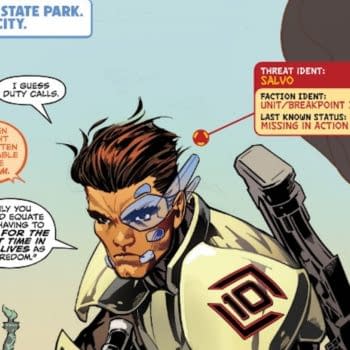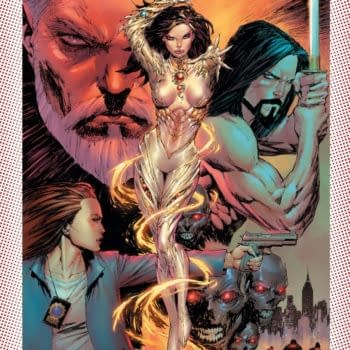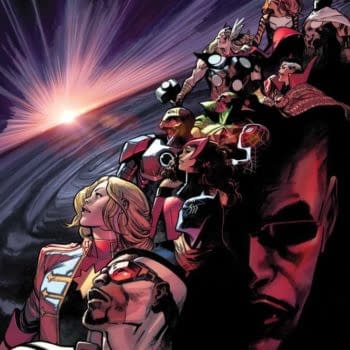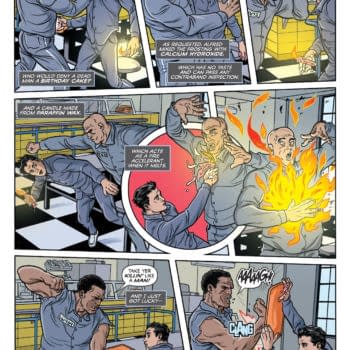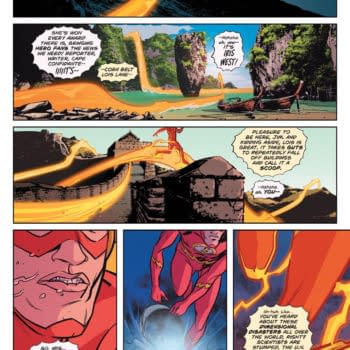Posted in: Comics | Tagged: Comics, entertainment
Two Badass Babes – Reading Shade, The Changing Girl & Motor Girl
I still have a few comics left to read, as well as a couple of graphic novels, from this week's really full cadre of releases, but I'm pausing to say a few things about the first two that I read, including Shade: The Changing Girl #2 from Vertigo, Motor Girl #1, which marks a new series from Terry Moore via Abstract Studio.
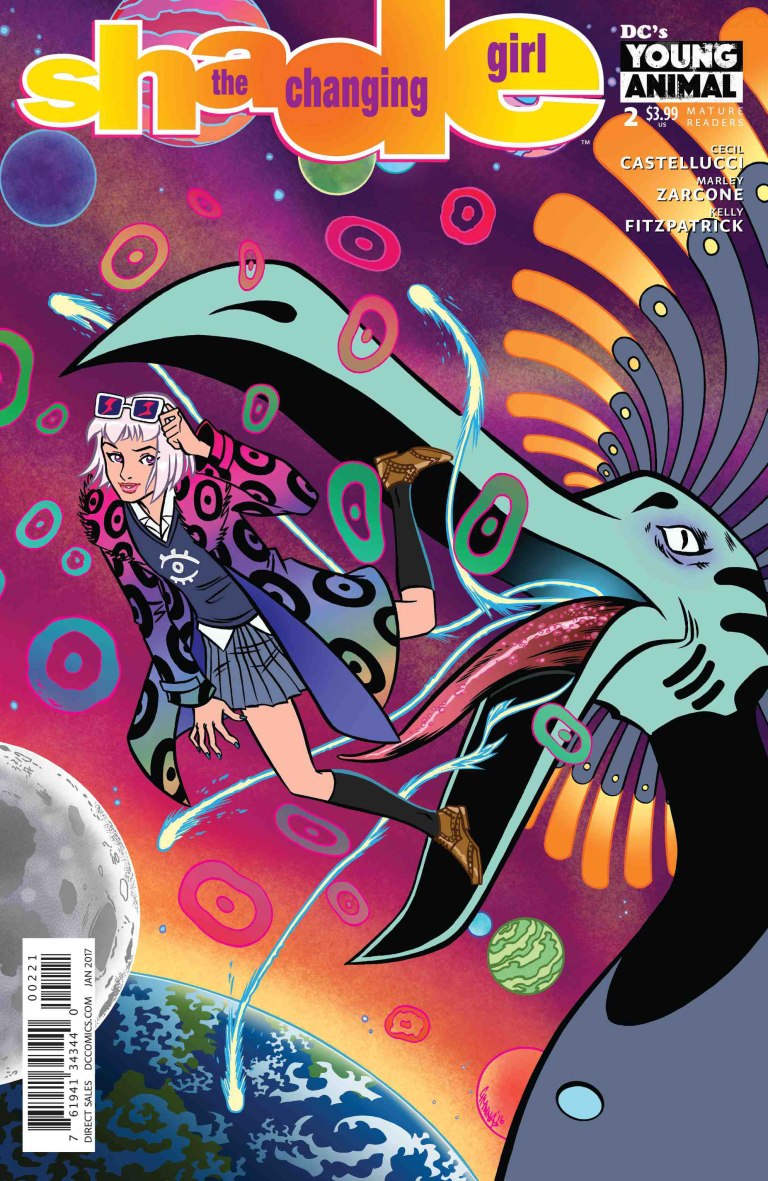
Shade: The Changing Girl #2 is written by Cecil Castellucci, illustrated by Marley Zarconeand Ande Parks, colored by Kelly Fitzpatrick, and lettered by Saida Temofonte, with a main cover by Becky Cloonan. I was pretty much delighted by the first very interesting issue of the comic, which is quite wacky, even if not quite as wacky as the other Young Animals imprint comic Doom Patrol. Gerard Way is listed as "Young Animal Headmaster" in this issue, and there's a thought-provoking essay in the back of this issue from Way about how it feels to have the full slate of first wave Young Animal comics released into the wild. In that essay, he says he feels that common themes are developing among the Young Animal comics in interesting ways, noting that parent-child relationships seems to be the strongest example right now.
I'd add something further, though perhaps it's too vague to explore fully, and that would be "possibility". We, as readers, feel a lot of possibility, in a positive sense, for the Young Animals line, but the comics that I've read so far embrace an almost disconcerting level of possibility on many levels–in storylines, in character development, in concepts and emotions. Within each story, possibility seems to remain open, and therefore vibrant and exciting.
 This issue of Shade continues to show that to me. You never know what Shade–inhabiting the human Megan's life and body–is going to think, say, or do. Waiting for those possibilities to take shape keeps you paying attention to every detail of the narrative. You also never know how her thoughts and perceptions are going to be visually represented. She sees things others may or may not see–readers see shapes and dripping outlines of aspects of reality that may or may not be evident to others in the story. Madness morphs and floats–often the artwork leads your eye around a panel and back, as do the text boxes "listening" to Shade's thoughts. In this issue, as Shade goes back to school, surrounded by the wreckage of Megan's mean girl lifestyle, even more variables come into play. Colorist Kelly Fitzpatrick is particularly on point making this a gorgeous, highly detailed book where small things come together to make a big difference in our experience of Shade's psychedelic reality.
This issue of Shade continues to show that to me. You never know what Shade–inhabiting the human Megan's life and body–is going to think, say, or do. Waiting for those possibilities to take shape keeps you paying attention to every detail of the narrative. You also never know how her thoughts and perceptions are going to be visually represented. She sees things others may or may not see–readers see shapes and dripping outlines of aspects of reality that may or may not be evident to others in the story. Madness morphs and floats–often the artwork leads your eye around a panel and back, as do the text boxes "listening" to Shade's thoughts. In this issue, as Shade goes back to school, surrounded by the wreckage of Megan's mean girl lifestyle, even more variables come into play. Colorist Kelly Fitzpatrick is particularly on point making this a gorgeous, highly detailed book where small things come together to make a big difference in our experience of Shade's psychedelic reality.
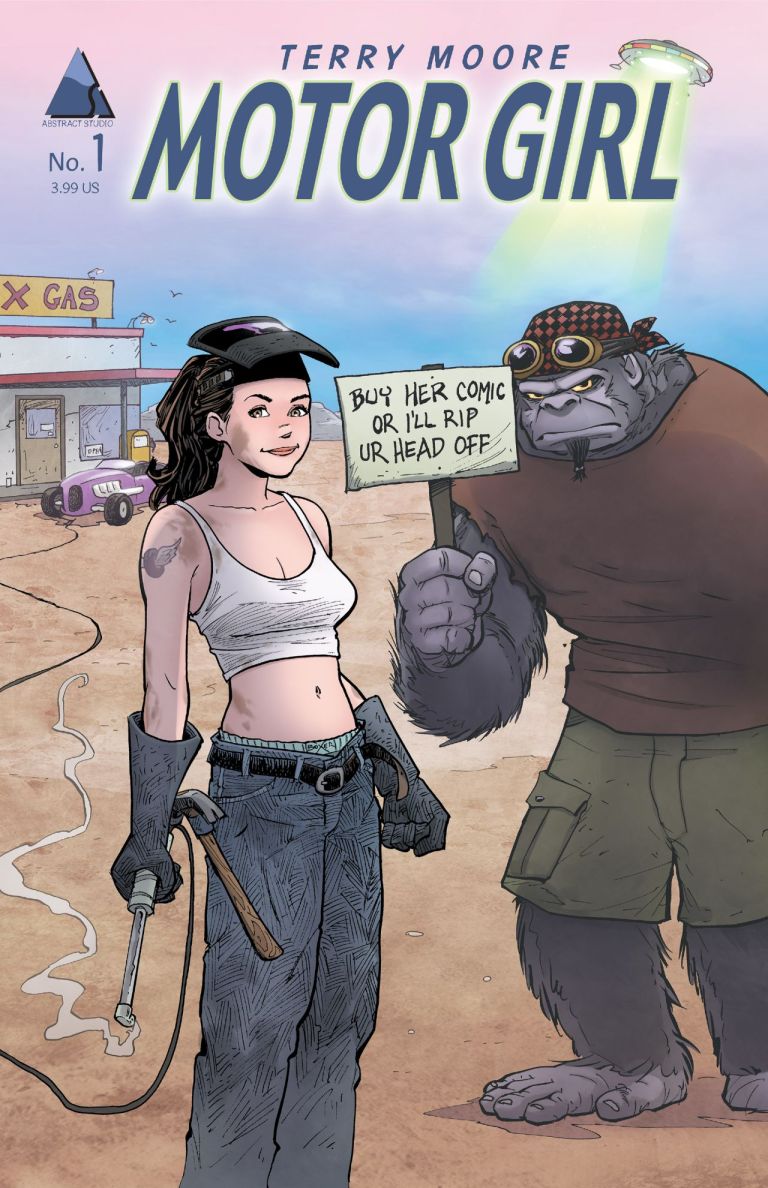
Next up, Terry Moore's Motor Girl #1. I am in the minority as a comics enthusiast who has never read a work by Moore. I know. I know. I have had the pleasure of hearing Mr. Moore speak on panels at conventions, and many hours of hearing friends talk about Strangers in Paradise and Rachel Rising. But in this instance alone, it may be a good test case not to have read his work before, since I pick up Motor Girl and I see only what's in front of me. What I see is a cover that breaks the fourth wall at the series' very first opportunity, which is interesting. I also see the sensitive clean linework that's made Moore's work identifiable from across a room, and oh yeah, there's a gorilla. Of course there is.
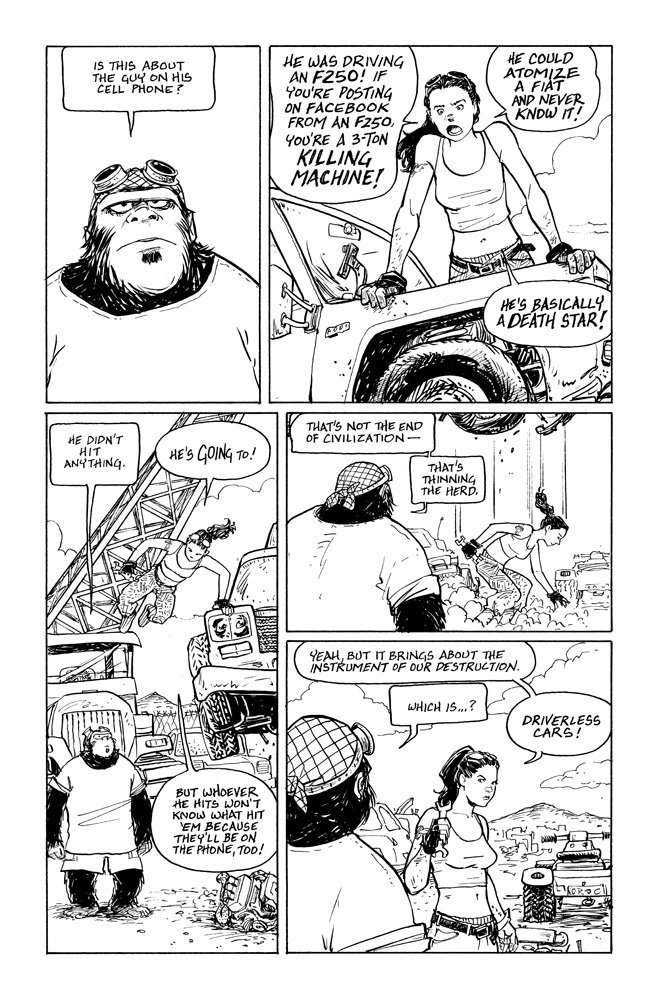 Texture breaks loose in the interior art on this black and white comic, and then you'll be tempted to just sit back and watch the work of a master inker. Did I mention hand lettering on the comic? Yep. The "watchable" aspect of this comic is astounding, too. Perhaps I should include "listenable" since there's a lot of dialogue between female mechanic, Samantha, and gorilla, Mike, to start things off. Sam has a lot to say about the trends in the world at large, including various apocalyptic predictions and conspiracy theories, but as a combat veteran with her own issues to live down, they don't seem to particularly disturb her. We learn that her world may be changing–and elements of change may be stranger than she thinks.
Texture breaks loose in the interior art on this black and white comic, and then you'll be tempted to just sit back and watch the work of a master inker. Did I mention hand lettering on the comic? Yep. The "watchable" aspect of this comic is astounding, too. Perhaps I should include "listenable" since there's a lot of dialogue between female mechanic, Samantha, and gorilla, Mike, to start things off. Sam has a lot to say about the trends in the world at large, including various apocalyptic predictions and conspiracy theories, but as a combat veteran with her own issues to live down, they don't seem to particularly disturb her. We learn that her world may be changing–and elements of change may be stranger than she thinks.
Introducing a female lead who is a mechanic and combat veteran is a welcome addition to comics right now and there will be plenty to explore about Sam's personality in future issues. This issue is also about observing our new characters in an environment familiar to them and seeing what life means to them–before seeing what life could become for them. It's overwhelmingly easy to see why Moore has accrued such a following through his works–his artwork is engaging, his storytelling unrushed, and his insistence on the texture of life as lived only cements the former qualities in the reader's mind. I'm looking forward to more Motor Girl.









